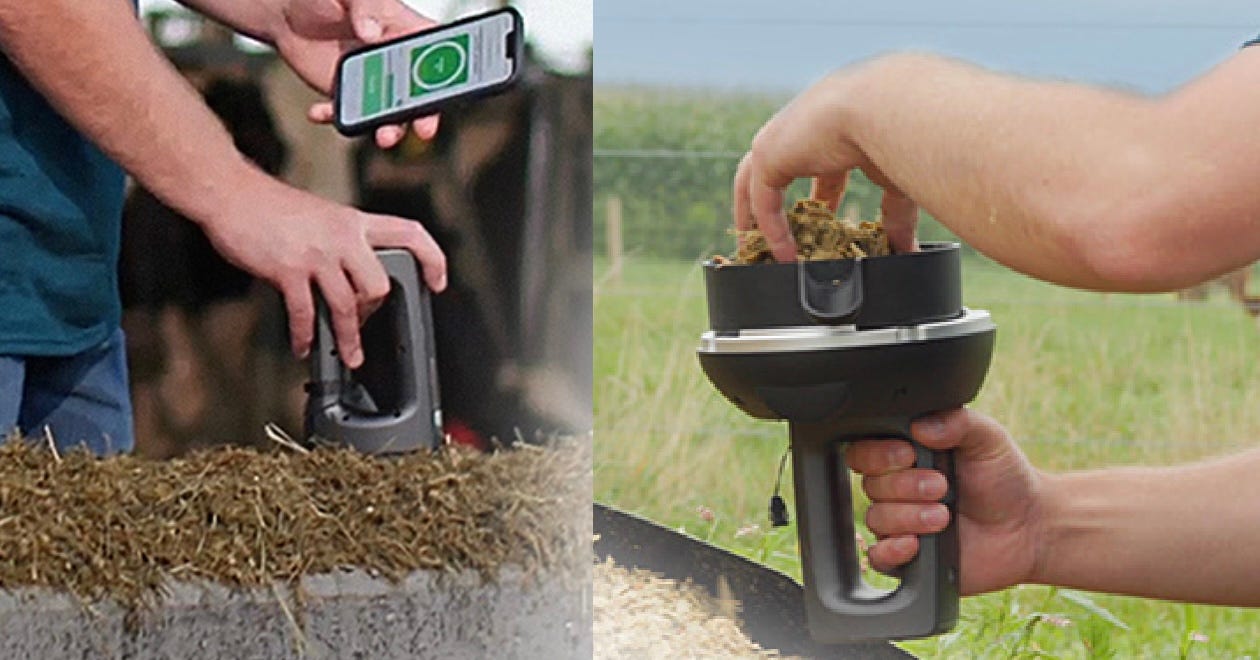Adaptable milk flow technology making waves in the U.S.
Global feed supplier switches its handheld NIR partner
A new technology that aims to drive productivity in the parlor by adjusting vacuum settings based on milk flow rates is now available in the United States for purchase.
This technology can sense and respond to milk flow rates in real time. Each milk meter (a measuring device attached to a milking unit) has a switch point in which the vacuum powering the system will switch from high speed to low speed. Default settings switch to high-speed vacuum at 4.4 pounds of milk flow per minute. Settings can be adjusted depending on each dairy’s preferences.
“The traditional vacuum system is a compromise that avoids the rise of over-milking (at the start and end of milking when milk flow is lower) but then has the potential of under-milking (when milk flow is at its peak),” Carl Oskar Paulrud says, DeLaval’s director of dairy development. This advanced milking system was developed in Sweden for five-plus years and is currently in operation on nine dairies (milking roughly 25,000 cows) in the U.S.
Equipment required for the use of the technology includes appropriate software, milk meters, a secondary vacuum line, control valves, vacuum monitoring sensors, and an internet connection. Each vacuum monitoring sensor relays information to a data hub via Bluetooth connection, which is connected by ethernet to a server that uses a wifi connection to transfer data to a laptop or smartphone.
“I like to tell producers this: you can get more milk in less time with fewer forced detaches with this technology,” says Steve Shea, solution manager for milk harvesting with DeLaval North America. Shea believes that this will benefit large dairy operations, as forced detaches (generally when a cow is uncomfortable and kicks a milker off) can be a concern.
One of the reference dairies using the technology in the U.S. that is milking 3,850 cows saw an improvement in flow rates by about 5%, decreasing forced detaches by one-third.
Udder health and comfort is believed to be improved with the adjustment of vacuum settings – as shorter milking times generally improve the health of teats.
Installation downtime for this technology varies depending upon size and type of parlor. This milking system is currently available for all milking parlor types, except swing parlors.
Go here to read more about harvesting milk with adaptable vacuum levels.
Global feed supplier switches its handheld NIR partner
Cargill Animal Nutrition recently announced it will partner with Si-Ware Systems and provide that company’s NeoSpectra handheld NIR feed analyzer to its on-farm dairy consultants. The NIR feed analyzer can be used for on-site analysis of forages, feeds and feed ingredients. The analyzer uses spectroscopy techniques and machine learning to analyze the nutrient content of feed and feed ingredients.

The partnership between Cargill and Si-Ware Systems aims to provide accurate and reliable data to help farmers, consultants and nutritionists accurately and instantly determine the nutrient content of their feed and feed ingredients. The two companies claim this will help increase yield and efficiency. Si-Ware also partners with Eurofins Agro, which also uses the NeoSpectra technology.
Several years ago, Cargill partnered with SCiO, another handheld NIR analyzer technology provider. Sources say that the accuracy of the first-generation handheld technology didn’t live up to Cargill’s expectations. SCiO has since come out with its second-generation technology. That product takes the form of a large mug, replacing the former device that looked like the fob for a garage door opener.
Dairy profit projections from ZISK
Projected profitability for the next 12-month for two dairy herd sizes HAVE INCREASED SLIGHTLY in recent profit projections from ZISK.
ZISK is a profit-projection smartphone app that tracks individual dairy farm profitability based on current CME board prices. Projections for a 1,000-cow dairy producing an average of 80 pounds of milk per cow and a 2,500-cow dairy producing an average of 85 pounds of milk per cow are provided.
12-month dairy farm profit projections (as of March 2, 2023):
1,000-cow dairy = $238,500 (UP about $34,700 since the middle of February)
2,500-cow dairy = $1.434 million (UP about $83,000 since the middle of February)






